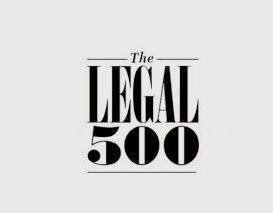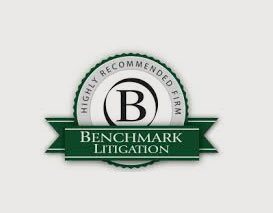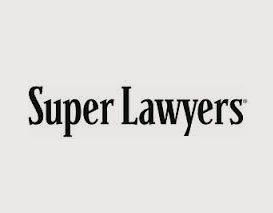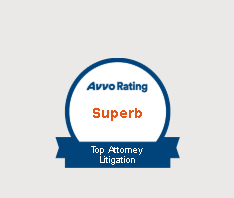Execution of Two Stipulations Proves Fatal to Defendant’s Motion for Relief Under CPLR 317
Print Article- Posted on: Jul 18 2025
Appearing in an action may give rise to a waiver of a litigant’s right to challenge the court’s jurisdiction over the litigant. As explained in prior blog articles, it is axiomatic that a “plaintiff appears [in an action] merely by bringing it.” Deutsche Bank Nat. Trust Co. v. Hall, 185 A.D.3d 1006, 1007 (2nd Dep’t 2020) (citation and internal quotation marks omitted).[1] Once served with process, a defendant must appear in an action to avoid a default. CPLR 320(a), which sets forth, inter alia, how a defendant can appear in an action, provides that “[t]he defendant appears by serving an answer or a notice of appearance, or by making a motion which has the effect of extending the time to answer.” See also Deutsche Bank, 185 A.D.3d at 1007-8 (describing the ways in which a defendant appears and the pitfalls of failing to do so). An appearance pursuant to CPLR 320(a) is a formal appearance.
New York courts, however, also recognize “informal appearances.” An informal appearance occurs “by actively litigating the action before the court.” Bank of New York Mellon v. Taylor, 230 A.D.3d 457, 458 (2nd Dep’t 2024) (citations and internal quotation marks omitted). An appearance, whether formal or informal, can have a significant impact on litigation. Among other things, an appearance could: preclude the entry of a default judgment by plaintiff; operate to preclude a defendant from interposing a defense of lack personal jurisdiction; and, preclude a defendant from having a complaint dismissed pursuant to CPLR 3215(c) based on a plaintiff’s failure to seek a default judgment within a year of default.[2] See, e.g., OneWest Bank, FSB v. Villafana, 231 A.D.3d 845, 847-48 (2nd Dep’t 2024); Bank of New York, 230 A.D.3d 457, 458-49 (2nd Dep’t 2024). Depending on the circumstances, a plaintiff or a defendant may argue that an informal appearance has been made in an action. A plaintiff may argue that an informal appearance has been made to obtain jurisdiction over a defendant, and a defendant may argue that an informal appearance has been made to avoid a default.
CPLR 317 permits a defendant to appear in, and defend, an action within one year after obtaining knowledge of the entry of a judgment: (1) if the summons was not personally delivered to the defendant or an agent for service designated by CPLR 318; (2) if the defendant did not appear; (3) if the court finds that the defendant did not have actual notice of the action in time to defend; and, (4) if the defendant has a meritorious defense.
Whether the defendant appeared in an action for the purpose of availing itself of CPLR 317 was an issue decided on July 16, 2025, by the Appellate Division, Second Department, in Chondrite Asset Trust v. 34 Dr. Corp., a mortgage foreclosure action.[3] The borrower in Chondrite borrowed almost $350,000 from the lender and secured its repayment obligations with a mortgage on real property located in Nassau County. The lender commenced a foreclosure action and served the borrower with process through the New York Secretary of State. The borrower failed to answer the complaint.
Despite failing to interpose an answer to the complaint, the lender and borrower entered into two stipulations adjourning the lender’s motion for leave to enter a default judgment and for an order of reference. Subsequently, the court issued an order of reference. When the lender moved to confirm the referee’s report as to the amount due to it and for a judgment of foreclosure and sale, the borrower cross-moved pursuant to CPLR 317 and 5015(a)(1)[4] to vacate the default in answering the complaint, and pursuant to CPLR 3012(d) for leave to serve a late answer. The motion court granted the lender’s motion, denied the borrower’s cross-motion and, inter alia, issued a judgment of foreclosure and sale.
The Second Department affirmed. As to CPLR 317, the Court found that the borrower “appeared in the action” by executing the two stipulations and noting that CPLR 317 is only applicable when a defendant does not appear. In addition. The Court found that the borrower failed to establish that it did not receive actual notice of the summons in time to defend the action.
As to CPLR 5015, the Court stated:
“A defendant seeking to vacate a default in answering a complaint on the basis of excusable default (see CPLR 5015[a][1]) and to compel the plaintiff to accept an untimely answer (see CPLR 3012[d]) must show both a reasonable excuse for the default and the existence of a potentially meritorious defense” (Deutsche Bank Natl. Trust Co. v. Benitez, `, 893, 118 N.Y.S.3d 173; see Wilmington Sav. Fund Socy., FSB v. Cabadiana, 230 A.D.3d 831, 832, 217 N.Y.S.3d 638). Here, [borrower] was not entitled to relief pursuant to CPLR 5015(a)(1) and 3012(d), as it failed to demonstrate a reasonable excuse for its default (see Wilmington Sav. Fund Socy., FSB v. Cabadiana, 230 A.D.3d at 832, 217 N.Y.S.3d 638; Bank of N.Y. v. Krausz, 144 A.D.3d 718, 41 N.Y.S.3d 84).
Jonathan H. Freiberger is a partner and co-founder of Freiberger Haber LLP. This article is for informational purposes and is not intended to be and should not be taken as legal advice.
[1] This BLOG has written numerous articles relating to formal and informal appearances (see, e.g., [here], [here], [here], [here], and [here]. The introduction to today’s article is based on some of those articles.
[2] This BLOG has addressed CPLR 3215(c) numerous times. To find one of our numerous BLOG articles related to CPLR 3215(c), visit the “Blog” tile on our website and enter “3215(c)” in the “search” box.
[3] This BLOG has written dozens of articles addressing numerous aspects of residential mortgage foreclosure. To find such articles, please see the Blog tile on our website and search for any foreclosure or other commercial litigation issue that may be of interest to you.
[4] This BLOG has addressed CPLR 5015 numerous times. To find one of our BLOG articles related to CPLR 5015, visit the “Blog” tile on our website and enter “5015” in the “search” box.
Tagged with: Appearance, Business Litigation, Civil Practice Law and Rules, Commercial Litigation, Default Judgement





